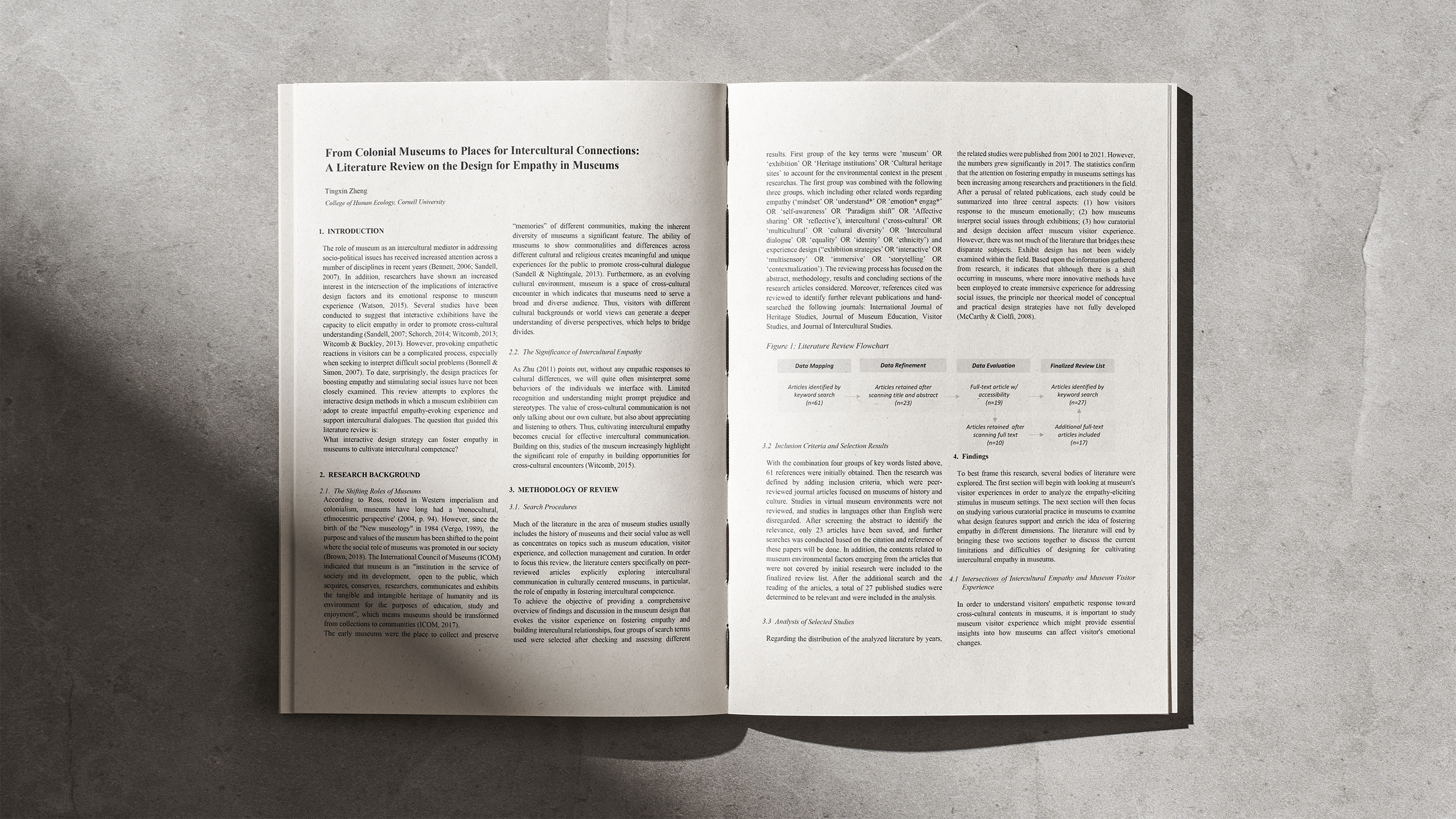Museum Matters
Exploring New Museum Experience Through Research
Literature Review + Pilot Study

[ Project Year ]
[ Project Type ]
[ Working Team ]
[ Key Words ]
[ Project Type ]
[ Working Team ]
[ Key Words ]
2021
Literature Review, Experimental Research
Individual Project
Virtual Reality in Museums, User Experience, Designing for Empathy, Museum Decolonization, Intercultural communication
Literature Review, Experimental Research
Individual Project
Virtual Reality in Museums, User Experience, Designing for Empathy, Museum Decolonization, Intercultural communication
Research Motivation:
The significance of museums as intercultural mediators in addressing socio-political concerns has been the focus of increased attention in recent years across various disciplines (Bennett, 2006; Sandell, 2007). Moreover, there has been a growing interest among researchers in exploring the relationship between interactive design elements and emotional responses to museum experiences (Watson, 2015). Numerous studies have demonstrated that interactive exhibitions have the potential to elicit empathy and facilitate cross-cultural understanding (Sandell, 2007; Schorch, 2014; Witcomb, 2013; Witcomb & Buckley, 2013). However, eliciting empathetic reactions from visitors can be a challenging task, particularly when it comes to interpreting complex social issues (Bonnell & Simon, 2007). To this end, surprisingly, the design strategies for enhancing empathy and stimulating engagement with social issues have yet to be thoroughly investigated. The literature review in this study aims to examine the various interactive design approaches that museums can employ to create impactful empathy-provoking experiences and support intercultural dialogues.
The central question guiding this study is:
What are the interactive design strategies that can foster empathy in museums and cultivate intercultural competence?
Purpose:
The objective of this study was to examine the effects of various modes of virtual museum visits on user experience and to determine if these effects were linked to individuals' prior physical museum visit habits.
Design:
A 2 × 3 factorial design was used in this experimental study, with previous physical museum visit frequency (High/Low frequency) as an attribute independent variable and modes of virtual museum visits (Web-based, Video-based, or Audio-based) was manipulated as an active independent variable.
Methods:
To assess the visting experience of the participants, a Museum Experience Scale (MES) was administered to a convenience sample of 12 students (7 females, 5 males, mean age 24.5) from Cornell University.
Results:
The results showed a positive correlation between physical museum visit frequency and user experience in the web-based and audio-based tours. However, a negative correlation was found in the video-based tour. Furthermore, there was a difference in user experience between the different modes of virtual museum visits, with the audio-based tour yielding more negative experiences and the video-based tour yielding more positive experiences.
The study aimed to gain an understanding of user experience in various forms of virtual museum visits and to evaluate visitors' attitudes and feelings towards virtual museums. The findings of this study can inform the development of effective strategies for delivering content in virtual museums.




